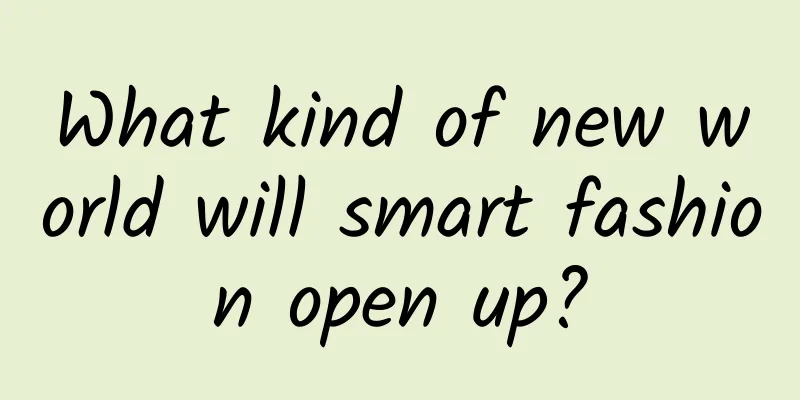Qianlong: Is Qianlong cabbage a cold dish? I have never seen it!

|
One good thing about the Internet age is that you never know when something will become popular. A few days ago, two announcers had a quarrel and made Qianlong cabbage very popular. After a few days, no one mentioned the announcer anymore, and the cabbage quarrel started again. The Internet was full of people arguing about whether Qianlong cabbage should be a cold dish or a hot dish, and there was a lot of sweet and salty party's intention. Qianlong cabbage: annoying, don't cue Can we not take advantage of this hot topic? Whether it is Qianlong or cabbage, we understand! Class representatives, step out and start practicing! News class representative: This dish is not even older than me It is said on the Internet that Qianlong cabbage comes from the old restaurant "Du Yi Chu" outside Qianmen, Beijing. Once, Qianlong went out of the palace for a private visit and was very thirsty. He happened to pass by this small restaurant and ate this cabbage, which made his mouth water and satisfied. After returning to the palace, he specially gave a golden plaque with the three characters "Du Yi Chu" written by hand. The restaurant named this dish Qianlong cabbage. Regardless of whether a restaurant dares to write the reign title on the menu, you can easily check the history of Duyichu to know the authenticity. Legend has it that Qianlong did visit Duyichu, and the golden plaque was indeed written by the emperor, but the emperor ate dried meat, pickled meat, and horse lotus meat, but never mentioned cabbage. There is no cabbage on the table. In fact, more than a year ago, Sun Lixin, the second uncle of the famous food blogger "Lao Fan Gu", released a video introducing this dish, clearly stating that "this dish was invented by our company." Listen, they are already a company, how can they be related to Qianlong? Sun Lixin is a national banquet chef and executive chef of Beijing Bian Yi Fang, and Du Yi Chu is also under the same group. According to Master Sun's disciples, this dish was indeed created in Du Yi Chu, but it was after the reform and opening up. As for whether Du Yi Chu was given this name because of its connection with Emperor Qianlong, it is unknown. Image from: Weibo @老饭骨家宴 Qianlong Chinese cabbage is a genuine cold dish. The method is actually very simple. Just mix the cabbage with sesame paste, sugar, honey, vinegar and salt. Although it is called Chinese cabbage, this small cold dish contains a lot of sugar, and even the sesame paste is high in calories. Eating this plate will make you gain more weight than chewing a big pork elbow. I suggest you try it, weight is important. Biology class representative: Qianlong may not have seen our cabbage Although the parties involved have spoken out, we still need to discuss the possibility of Qianlong eating this dish in a responsible manner. This section will first discuss the cabbage, and then Qianlong in the next section. Cabbage appeared in ancient Chinese classics very early, and it was called "cabbage" at that time. Although its origin is near the Mediterranean in West Asia, it is valued and cultivated here. After thousands of years of cultivation, cabbage (the standard term should be called cabbage-type Brassica rapa) has blossomed all over China, forming many varieties of vegetables with very different appearances. The loose-leaf cabbage that appeared earlier is now called "small cabbage" in the north. The Chinese cabbage we eat today is a relatively late variety. In agriculture, it is called "cabbage" because its leaves are wrapped around the heart and tightly rolled into a ball. Chinese cabbage (trade name), Shanghai green, and Wuta cabbage are also Brassica rapa. They are treated as variants in botany, but are collectively called "non-cabbage" in agriculture. For the relationship between these vegetables in the Brassica genus, please refer to our previous article, so I won't go into details here (click here to review). When did cabbage appear? The ancient books do not give a specific time point, but scholars speculate that the earliest time was around the end of the Ming Dynasty and the beginning of the Qing Dynasty. Before that, the cabbage or cabbage mentioned in ancient books were non-heading varieties, that is, small green vegetables. The cabbage in the Qing Dynasty's "Illustrated Records of Plant Names and Realities" is still like this Starting from the Song Dynasty, a variety of cabbage similar to today's Chinese cabbage, "Oyster Cabbage", appeared in Jiangnan. It was said that its "leaves were wrinkled and large in clusters", and the wrinkled leaves were a prominent feature. Later, there were varieties such as "Yellow Bud Cabbage", but none of them formed heads. The official record of cabbage appeared in the "Jiaozhou Chronicle" during the Daoguang period: "Cabbage is called white cabbage, and its quality is the best vegetable. Its leaves are rolled up like a bundle, so it is called white cabbage with a curled heart." The "Shuntianfu Chronicle" of the Guangxu period stated: "Yellow sprout cabbage is the latest variety of cabbage. It has a straight stem, a yellow heart, and is rolled up like a roll. People now call it white cabbage." These two records clearly show that it is cabbage with a curled heart. The cabbage rolled inward and became a cabbage. It's too cruel. If we follow the extreme case that the document records were very timely, then cabbage did not appear until the Jiaqing and Daoguang periods, and Emperor Qianlong had never even seen it. The cabbages before that were not sweet and crisp enough, and even if there was this Qianlong cabbage dish back then, they were not suitable for cooking (News class representative: There was no such thing back then!). Of course, given the speed of information dissemination in ancient times, extreme situations are unlikely. History class representative: Qianlong did not eat raw vegetables After talking about cabbage, let’s talk about Qianlong. The author specifically consulted a good friend, Professor Yang Yuan, a postdoctoral fellow at the Institute of Manchu Studies of the Beijing Academy of Social Sciences, who is an expert in Qing history and palace diet. Professor Yang said: Qianlong almost never ate any similar dishes, let alone cabbage, because in the Qing palace's dietary habits, vegetables were not eaten raw. From historical archives, we can easily find that the diet in the Qing Dynasty was actually very unhealthy. It was high in oil, sugar, all meat, liked offal, liked fried food, and had a low proportion of vegetables. This is also the living habit of the nomadic people in Northeast China. They have been used to eating it for generations. They can't afford it when they are poor, but they can make as much as they want when they become emperors. Qing Palace Menu The picture comes from Mr. Yang Yuan’s official account As can be seen from this menu, there is not a single vegetarian dish. In fact, Qianlong had a relatively healthy diet and advocated eating more vegetarian food in his middle and old age. However, the vegetables in the Qing Palace were mostly paired with meat dishes, and there was rarely an opportunity to stir-fry a pure vegetarian dish. The vegetarian dishes in the platter were mostly soy products and dairy products. The vegetables were either cooked or pickled, and there was basically no record of eating them raw. Teacher Yang said that, as far as he could remember, there were only two kinds of raw cabbage products that appeared in the Qing Palace: one was cabbage buns, and the other was quince heart. Vegetable buns are an ancestral food of the Manchus, and are said to have existed outside the Great Wall. In fact, in the documents of the Ming Dynasty, there are vegetable buns in the recipes of the Ming Emperor, so it is hard to say that they were created by the Manchus. The so-called vegetable buns are meat, sauce, rice, bean products, seasonings, etc. put in cabbage leaves (lettuce leaves were used in the Ming Dynasty) and roll them up. The Qing court had a custom of eating vegetable buns on the 26th day of the eighth lunar month, when the autumn cabbage had just matured and was at its freshest. Teacher Yang has researched that in the late Qing Dynasty, Cen Chunxuan was rewarded with "Zhujiu Vegetable Buns" for his meritorious service in protecting Empress Dowager Cixi and Emperor Guangxu from escaping to the west. He brought the method of this food to Guangzhou and created the pigeon and pine vegetable buns in Cantonese cuisine with local ingredients. Modern pigeon lettuce buns The quince heart is not made of quince. Instead, hawthorn is fried into jam and mixed with raw cabbage hearts. This is a rare example in the Qing court. Later, this dish spread out of the palace and became a snack among the people of Beijing. It was specifically mentioned in Mr. Lao She's "Four Generations Under One Roof". Quince heart, this quince is not authentic enough Although the Qing Dynasty lasted for three or four hundred years, the royal eating habits did not change much. Except for Emperor Qianlong's large-scale introduction of Jiangnan cuisine, the royal eating habits were very conventional. Therefore, even if this dish of cabbage with sesame paste was available at that time (News class representative: I’ve said it three times, it’s not available!), Qianlong would hardly ever eat it. At noon today, let me eat a dish of Qianlong cabbage on behalf of Emperor Qianlong! Written by | Xin Fuchen Some pictures are from | TuChong Creative WeChat Editor | Happy Source | Museum |
<<: The longest lunar eclipse in 580 years, what would happen if you missed it?
>>: There is a medicine called "Ten Merits"
Recommend
56 Ad Monetization Terms You Must Know in 2020
According to a report from Aurora, the total onli...
The most difficult 618 sales data grew by 100% against the trend, TCL created the best combination of high-end products
The repeated epidemics, obstructed logistics, the...
Zhang Chaoyang's Sogou Ma Huateng's Sogou
Sogou, which had originally planned to go public ...
Tips for creating short videos on Tik Tok
Since becoming popular, short videos have quickly...
Can eating a lot of delicious food really relieve stress?
Author: Xue Qingxin, registered dietitian Reviewe...
Pride and Prejudice: Luo Yonghao's slap in the face and Hammer's return to the ground
Luo Yonghao was slapped in the face again, and th...
2020 Zhihu operation and promotion strategy!
I think Zhihu operation is just one of the channe...
Dacheng produced "Dacheng Chat Class" video tutorial
Introduction to the tutorial of "Dacheng Cha...
The hot operating strategy of Daodao Accounting APP
In the past two years, an accounting software cal...
The transmission and response mechanism of touch events in iOS
All inherited responder objects UIResponder can r...
5 tips to solve 80% of the troubles of bringing goods to Douyin
The method of selling goods through live streamin...
Review: Sharing of event operation planning process
Operational activities are one of the common meth...
Scientists discover gene that increases yields in corn and rice
According to reports, in the early morning of Mar...
6-month-old baby early education training course video full set (56 episodes) Baidu cloud download
6-month-old baby early childhood training course ...
Summary of Android 7.0 Dynamic Permissions
In response to the company's project requirem...









